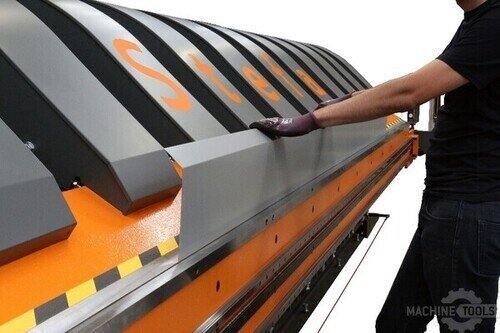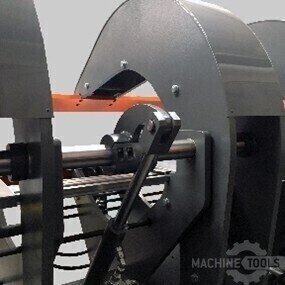From my earliest days working the shop floors on the south side of Chicago, I’ve seen firsthand what it takes to keep a metal fabrication business running lean, profitable, and competitive. My journey—from the hands-on grind to my current role as Regional Sales Executive at Mac-Tech—has always been shaped by a customer-first mindset. Whether you’re a local roofing contractor or a national manufacturer, my goal is to help you navigate the complex world of trim fabrication equipment, so you can make the right choices for your operation. Let’s dig into how the latest CNC folding technology is transforming trim fabrication, and what it can mean for your bottom line.
Leveraging Industry Experience: Insights into Efficient Coil-Fed Production
Over the years, I’ve worked alongside businesses upgrading everything from manual brakes to fully automated coil-fed production lines. The difference I see every day isn’t just in the machinery—it’s in the workflow. A well-integrated line, combining decoilers, slitters, folders, and roll formers, can turn raw coil into high-quality trim products like soffit panels and fascia at remarkable speeds.
The key is understanding where the real value lies. CNC folding machines, especially when paired with automated slitting and feeding systems, allow operators to process custom orders, short runs, and complex profiles without the setup headaches of traditional brakes. That means less downtime, fewer errors, and a smoother path from coil to finished part.
Identifying Bottlenecks: Where Traditional Trim Fabrication Falls Short
Let’s be honest—manual brakes and basic folders have their place, but they’re often the weak link in a modern production line. I’ve seen shops where talented crews are stuck making repetitive bends, double-handling material, or fighting with inconsistent tolerances. These bottlenecks show up as:
- Increased scrap from mis-bends or handling errors
- Slow changeovers between profiles or batch sizes
- Excessive labor tied up in low-value tasks
- Difficulty maintaining quality on long or complex parts
When your throughput is limited by your forming station, it doesn’t matter how fast your slitter or decoiler runs. That’s where CNC folding machines come into play.
Evaluating Your Needs: Slitting, Forming, Folding, and Production Speed
Every operation is unique. My approach starts with a walk-through—looking at your current flow, your product mix, and your pain points. Are you producing a high volume of standard trims, or do you need flexibility for architectural details and custom orders? How much coil width are you processing, and what kinds of finishes?
Here are some questions I help customers answer:
- Do you need integrated slitting for custom widths, or are you running standard coil sizes?
- Is your bottleneck in forming speed, material handling, or downstream processes?
- How critical are tight tolerances and repeatability for your end customers?
- What’s your average run size—and how often do you need to switch profiles?
Matching the right folder, slitter, or roll former to your workflow is about more than specs on paper—it’s about how the equipment fits your real-world production.
The CNC Folding Advantage: Reducing Waste and Increasing Output
CNC folding machines offer several clear advantages over both manual brakes and even some traditional hydraulic folders:
- Automation: Recipe-driven programming allows for rapid setup, profile changes, and minimal operator intervention.
- Reduced Labor: One operator can do the work of two or three, freeing skilled staff for more valuable tasks.
- Tighter Tolerances: Servo-driven positioning and programmable backgauges deliver consistency, even on complex bends or long panels.
- Higher Throughput: Faster cycle times and reduced handling mean more parts per shift.
- Less Scrap: Intelligent folding sequences and backgauge automation minimize material waste.
For trim fabricators producing soffit, fascia, drip edge, and custom flashing, these benefits add up to lower costs, faster turnaround, and the ability to take on more demanding jobs.
Upgrading Your Equipment: Key Considerations for Selecting High-Performance Machines
When it’s time to invest, I guide customers through a few critical factors:
- Machine Style: Single-beam, combi-beam, or double folder? Each has strengths depending on your profile complexity and volume.
- Drive System: Servo-driven folders offer speed, precision, and energy efficiency over traditional hydraulics.
- Integration Capability: Can the machine connect with your existing slitter, decoiler, or roll former?
- Footprint and Safety: Modern folders are more compact and feature enhanced guarding and ergonomic loading.
- Support and Training: Reliable local service, remote diagnostics, and operator training are non-negotiable for uptime.
The right investment isn’t always the biggest machine—it’s the one that fits your shop, your crew, and your business goals.
Integrating CNC Folding into Existing Processes for Maximum Efficiency
Adding a CNC folder doesn’t mean tossing out your current equipment. In fact, the best results often come from smart integration:
- Coil Handling: Automated decoilers and slitters feed pre-cut blanks directly to the folder, reducing manual handling.
- Material Flow: Configuring your line for one-piece flow minimizes transport and stacks of work-in-process.
- Downstream Flexibility: Finished parts move efficiently to packaging, shipping, or secondary operations.
- Software Integration: Linking your folder’s control to job tracking and scheduling systems ensures you’re always working on the right order.
I’ve helped shops retrofit older lines, add automation modules, and even combine folders with existing roll forming equipment for a true “best of both worlds” approach.
Real-World Results: Success Stories from Customers in Metal Folding and Roll Forming
One of our Midwest customers, a regional roofing supplier, was struggling with labor shortages and inconsistent quality on custom fascia profiles. By upgrading to a servo-driven CNC folder and integrating it with their existing coil line, they cut setup times by 70% and reduced scrap by over 30%. Another customer, focused on architectural metals, leveraged a combi-beam folder to tackle complex bends that were previously outsourced—bringing new revenue streams in-house.
Across the board, our clients report:
- Higher output per shift, even with leaner crews
- Faster response to rush orders and custom work
- Improved finish quality and reduced rework rates
- Safer, more ergonomic work environments
Continuous Improvement: Ongoing Support and Optimization for Trim Fabricators
Investing in automation is just the beginning. At Mac-Tech, we’re committed to long-term partnerships:
- Onsite and Remote Training: Ensuring your team is confident and productive from day one
- Preventive Maintenance: Scheduled service to keep your line running at peak performance
- Process Optimization: Regular check-ins to tune workflows, update software, and maximize ROI
- Parts and Service: Rapid-response support to minimize downtime
I make it a point to stay in touch with every customer—because your success is the best measure of ours.
Frequently Asked Questions
When is the right time to upgrade a roll former or folder?
If you’re seeing persistent bottlenecks, rising labor costs, or quality issues—or if you’re losing jobs to faster competitors—it’s time to evaluate an upgrade. I recommend a full workflow assessment to see where automation can deliver the most impact.
How do servo-driven folders compare to hydraulic systems?
Servo-driven folders offer faster cycle times, quieter operation, and greater precision. They use less energy and require less maintenance, making them ideal for high-mix, high-precision trim fabrication.
What’s the difference between a combi-beam and double folder?
A combi-beam folder can switch between straight and radius tools in a single setup, increasing flexibility for complex profiles. Double folders have two folding beams, enabling simultaneous up and down bends—perfect for high-volume runs with complex geometries.
What are signs a roll forming line is no longer cost-effective?
Watch for excessive downtime, frequent tooling changes, high scrap rates, or labor-intensive setups. If your throughput or quality isn’t keeping up with demand, it’s time to explore newer, more automated solutions.
Can CNC folders be integrated with older slitting or decoiling equipment?
Absolutely. Many modern folders feature open controls and modular designs to connect with existing upstream and downstream equipment. I can help you map out a phased integration plan.
How long does it take to train operators on a new CNC folder?
With today’s intuitive controls and recipe-based programming, most operators are up to speed within a week. Mac-Tech provides both onsite and remote support to ensure a smooth transition.
Ready to see how CNC folding can boost your trim fabrication? Whether you’re considering a single machine or a full line upgrade, I’m here to help you every step of the way. Let’s schedule a walkthrough, demo, or a no-obligation quote—just reach out via the form below, or contact me directly at pat@mac-tech.com or 414-232-7929.
Get Weekly Mac-Tech News & Updates







